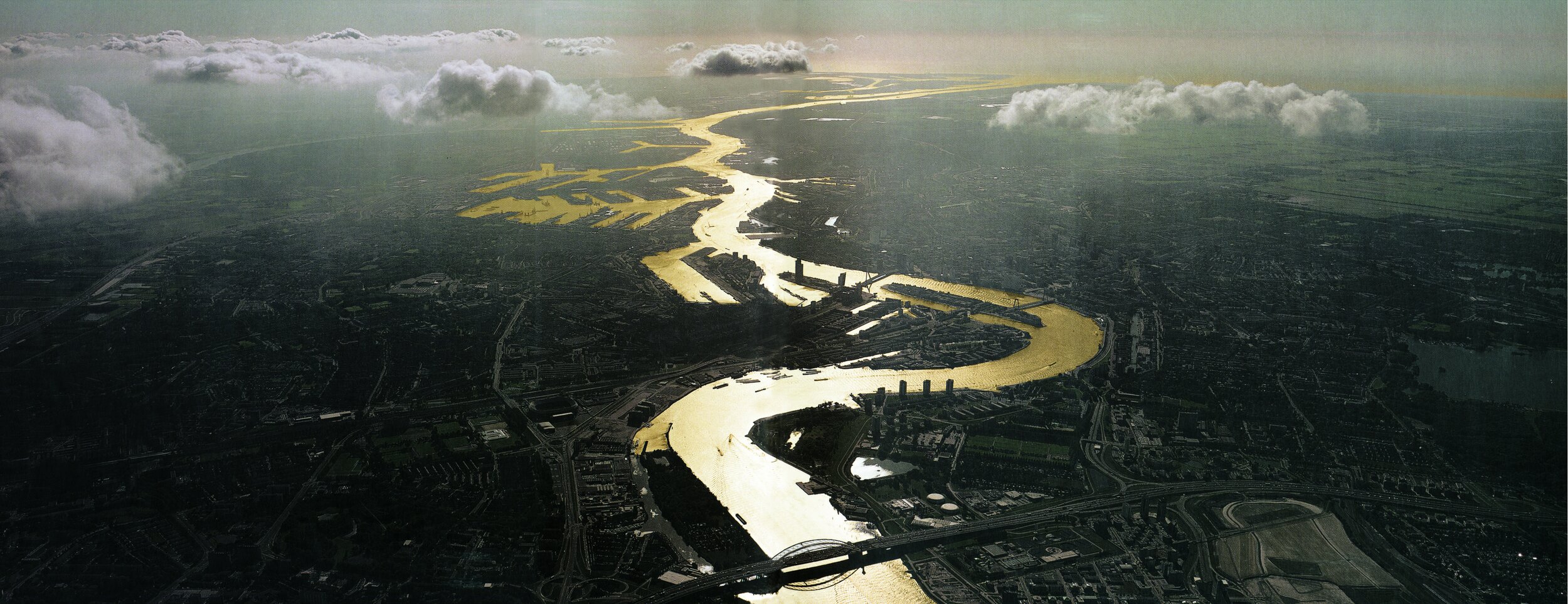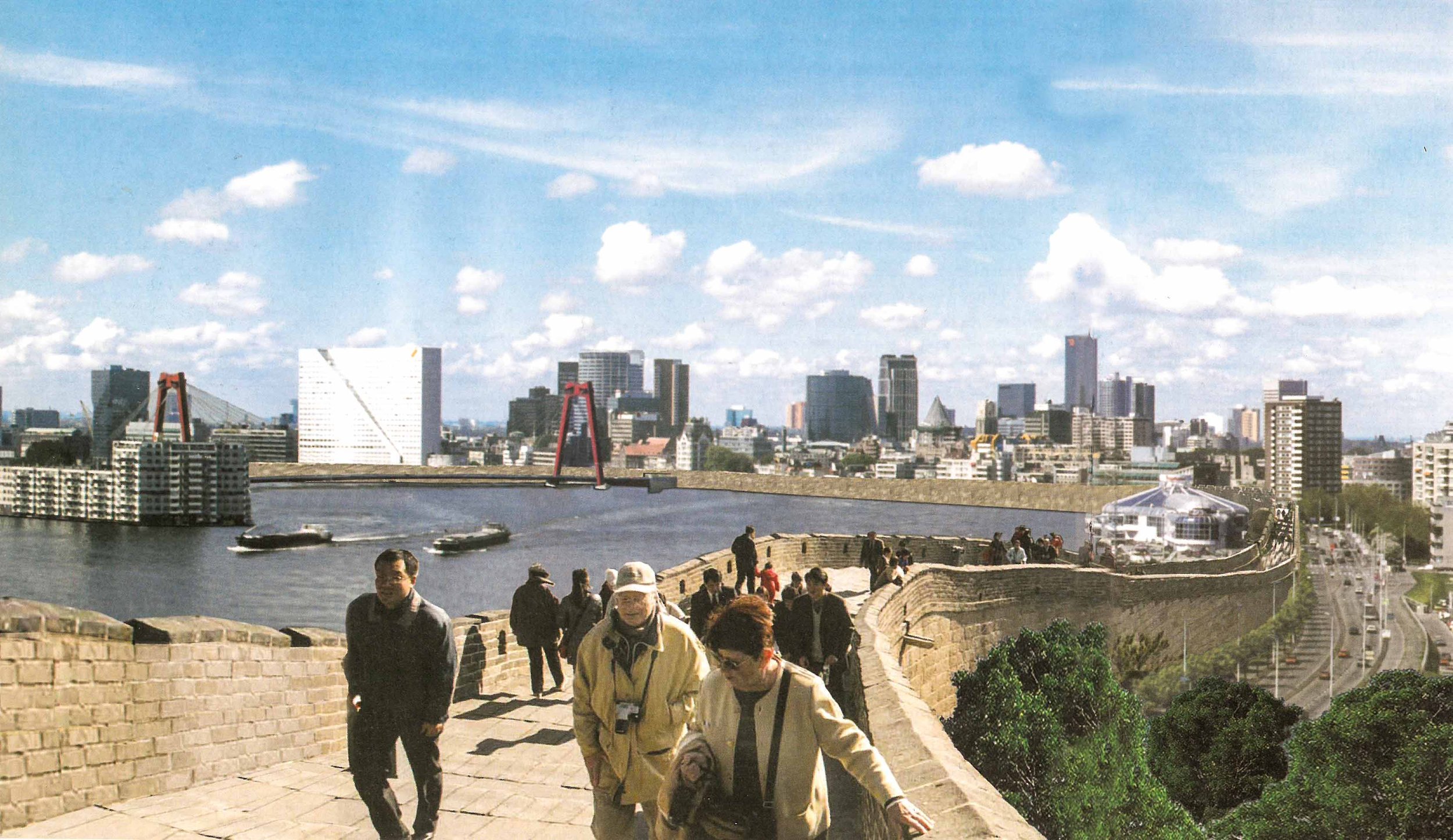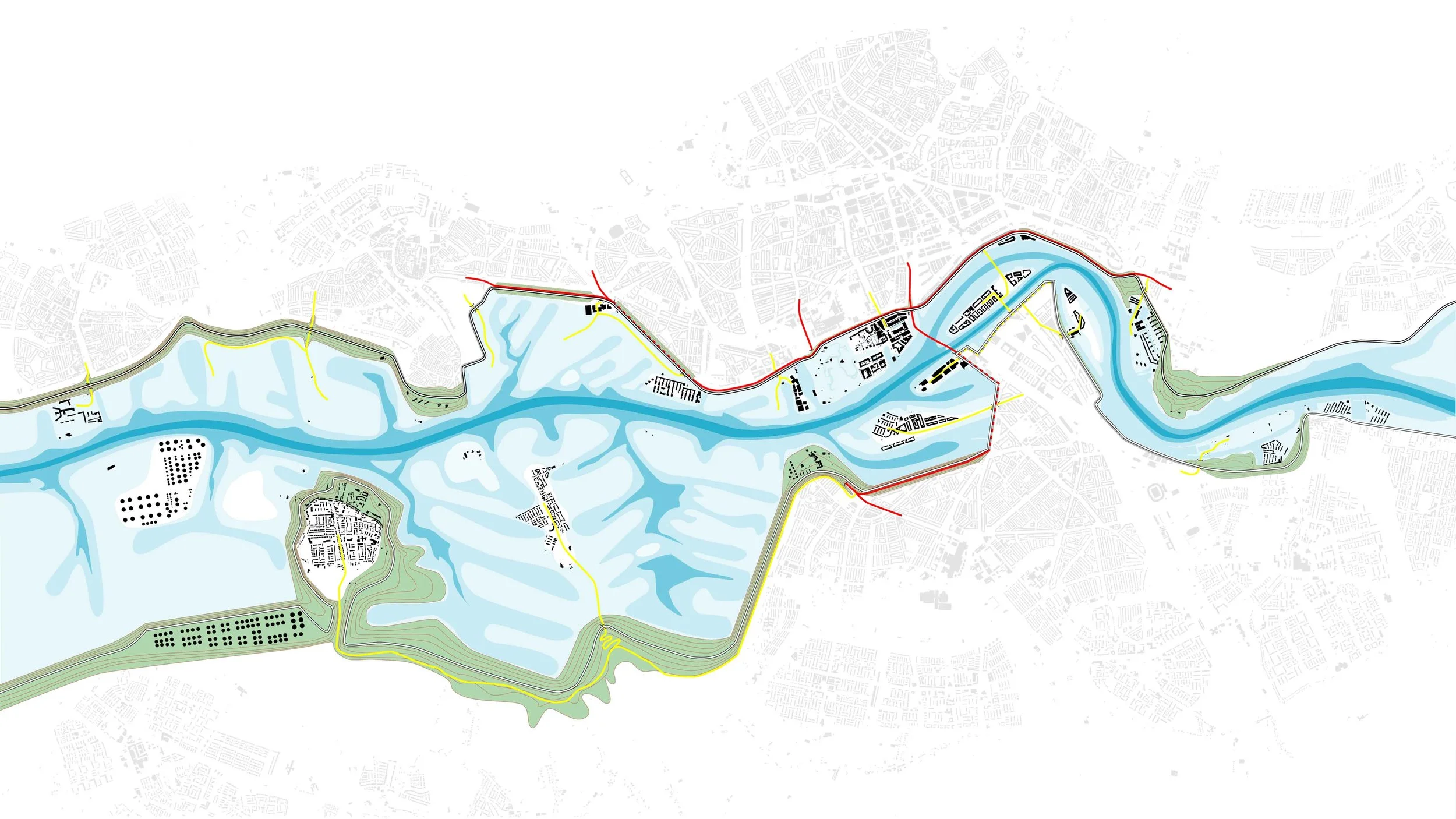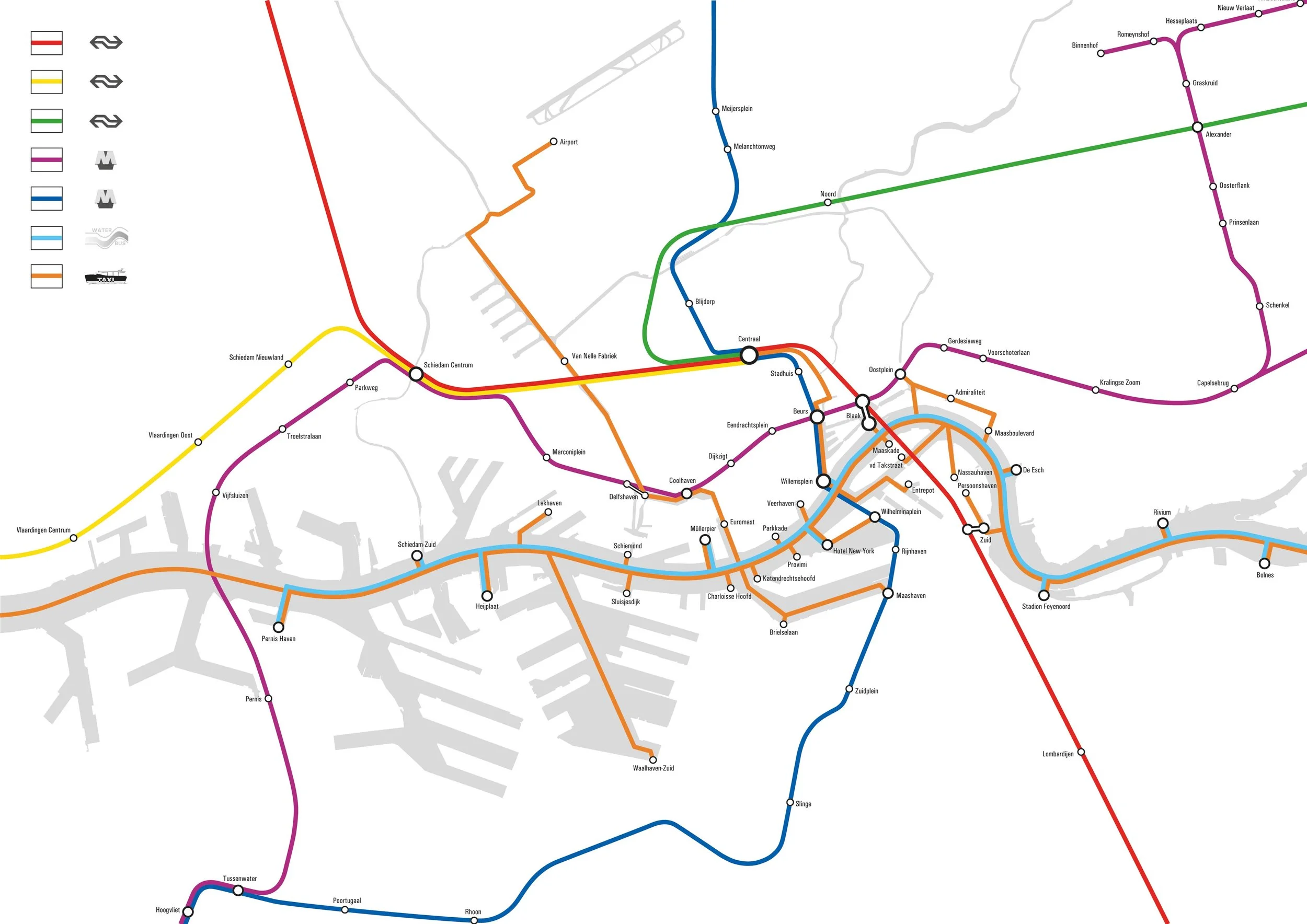
Watercity 2035
Rotterdam, The Netherlands
Location | Rotterdam Region, The Netherlands
Year | 2004 - 2005
Client | City of Rotterdam, Waterboards of Schieland & Krimpenerwaard, Hollandse Delta and Delfland
Collaboration | Urban Affairs
Status | Explorative scenario study
Although Rotterdam has an attractive position at the mouth of a river and within an extensive Dutch delta, this omnipresence of water is hardly perceivable in the city itself. Due to climate change water will pose an increasing threat to the city from four directions: the sea, the river, the sky and the land. The study ‘Watercity 2035’ explores the possibilities to enlarge the enjoyable qualities of the water for all inhabitants of Rotterdam in five complementary future perspectives.
In the first perspective, the rise of the sea level is counteracted by a new maritime defensive work that defines a city inside the dikes and a city outside the dikes far more distinctly than is presently the case. In the outer dike area measures are taken that allow periodic flooding. The second perspective designates the river Maas as the principal public domain, along and on which people can live. Tidal fluctuation of the water is used as a possibility for a diverse urban vocabulary of riverside housing.
The second perspective designates the river Maas as the principal public domain, along and on which people can live. Tidal fluctuation of the water is used as a possibility for a diverse urban vocabulary of riverside housing.
The third perspective not only pleads for a more expansive public transport system by water, but also for a smoother interlinking of the water network and the land network thus creating a comprehensive and attractive public transport system
The fourth perspective proposes the structural detachment of the rainwater discharge from the sewerage system in Rotterdam. Instead of further expansion of the costly underground water infrastructure, the retention, storage and discharge of rainwater is henceforth visible and audible in the public space.
The last perspective highlights the ecological potential of diversifying the banks of the River Maas.






